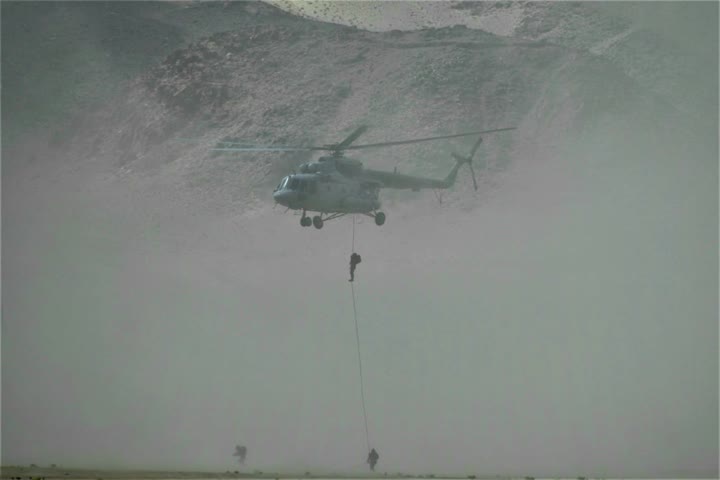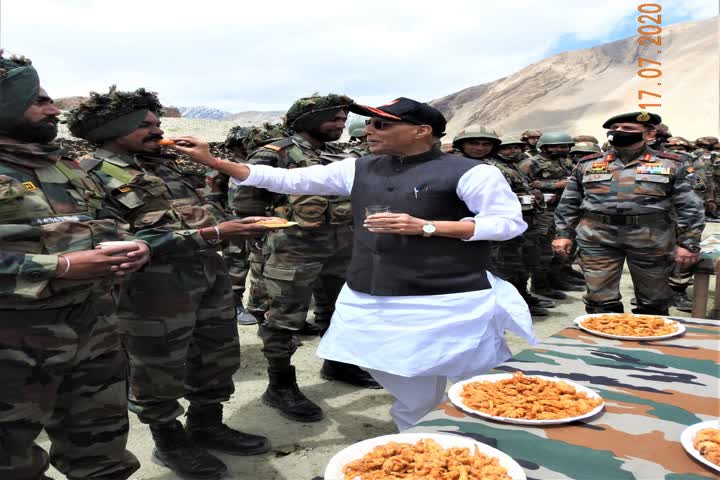New Delhi: With Defence Minister Rajnath Singh on a two-day tour to areas near the Line of Actual Control (LAC) with China and the Line of Control (LoC) with Pakistan, there is no doubt that despite the ongoing talks at the military, diplomatic and special representative levels, there is a serious mind-game going on between the political leaderships of the two Asian giants.
On Friday, defence minister Singh followed the course set by PM Narendra Modi and did not take China’s name directly during his morale-boosting address to soldiers at Lukung, on the west bank of the Pangong Tso and about 40 km away from the flashpoint Finger 4 face-off site.

Two Fridays ago, on July 3, during the PM’s surprise visit to Nimu, headquarters of an infantry division, Modi, too, did not take China’s name.

This may be a planned response to the fact that Chinese president Xi Jinping is yet to take India’s name even once ever since the confrontation started between the world’s two largest armies along the LAC and is holding the cards close to his chest.
Read: PM Modi sends strong message to China, says age of expansionism is over
Nor has Xi revealed on what he thinks about the ongoing India-China ‘disengagement and de-escalation’ talks. Perhaps that is why the defence minister said during his address: “The issue should be resolved. But to what extent I cannot guarantee.”

But at the same time, the Indian political leadership has come out with an emphasis on a political-diplomatic resolution rather than any other. Striking a note of peace, Singh said: “India is that only country in the world that has neither attacked any other country nor occupied even an inch of foreign territory…we seek peace”. It was followed up with a tough note: “No power on earth can touch even one inch of India’s territory.”

Read: Rajnath Singh witnesses military drill in Ladakh displaying combat readiness
In essence therefore, the attitude of the Indian political leadership is on avoidance of a precipitation of the confrontation.
Nor is there any finality of the ‘preliminary’ disengagement moves at Galwan Valley, Pangong Lake, Gogra and Hot Springs because the nature of these moves, as of now, is to merely avoid eyeball-to-eyeball confrontation and to cool “hot tempers”.

The finality will be stamped only with assurance from the Chinese political leadership and that is what is not forthcoming till now.
Having travelled to close to the LAC, the defence minister on Friday afternoon flew to Srinagar where he will be briefed by the Chinar corps commander on counter-insurgency operational issues and the LoC situation besides holding a review meeting with the Lieutenant Governor on the arrangements for the upcoming Amarnath pilgrimage.
Read: Under shadow of 'secret' Iran-China pact, India left out of Chabahar rail project
On Friday morning, Singh witnessed a special assault drill by Ladakhi soldiers from the Ladakh Scouts, which has come a long way from a small motley militia of about 130 men in 1947 to a about-4,000 strong fighting force and be counted as among the best high-altitude fighters not just in the country but in the entire world. They are among those who make India perhaps the country with the biggest and among the best of mountain warriors.
Also being showcased for the minister was an operation that involved application of integrated combined force in high altitude terrain involving state-of-the art IAF helicopters and special forces.



